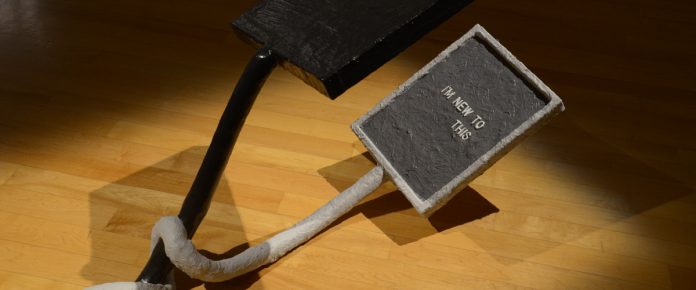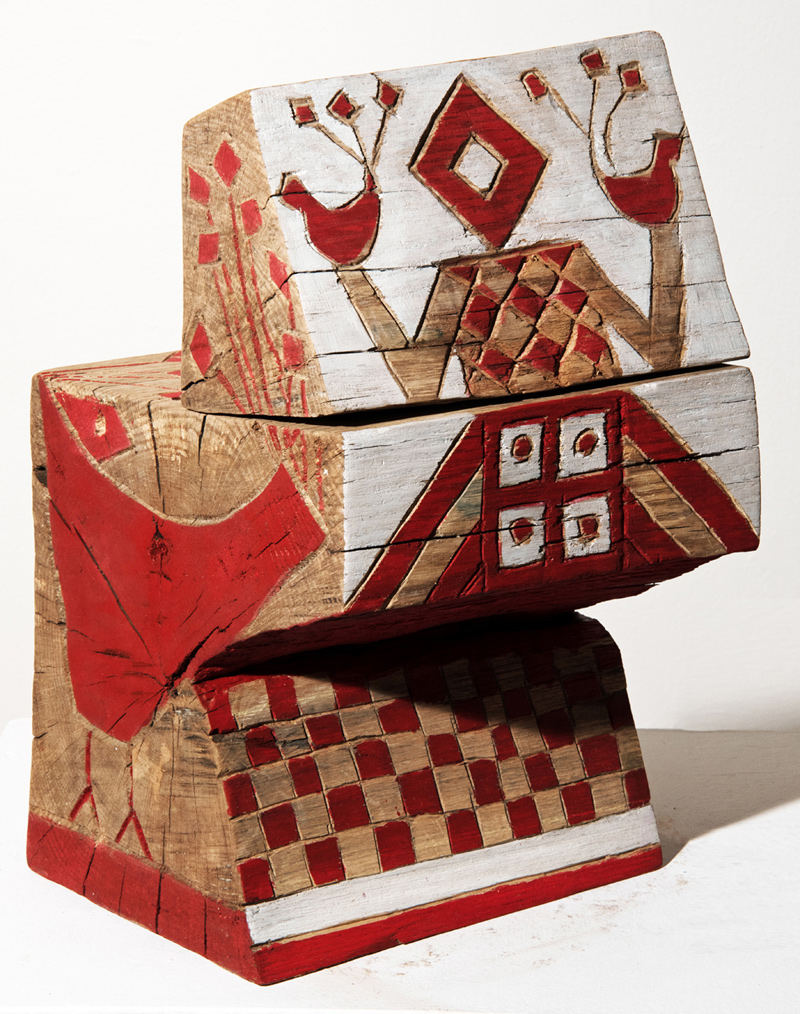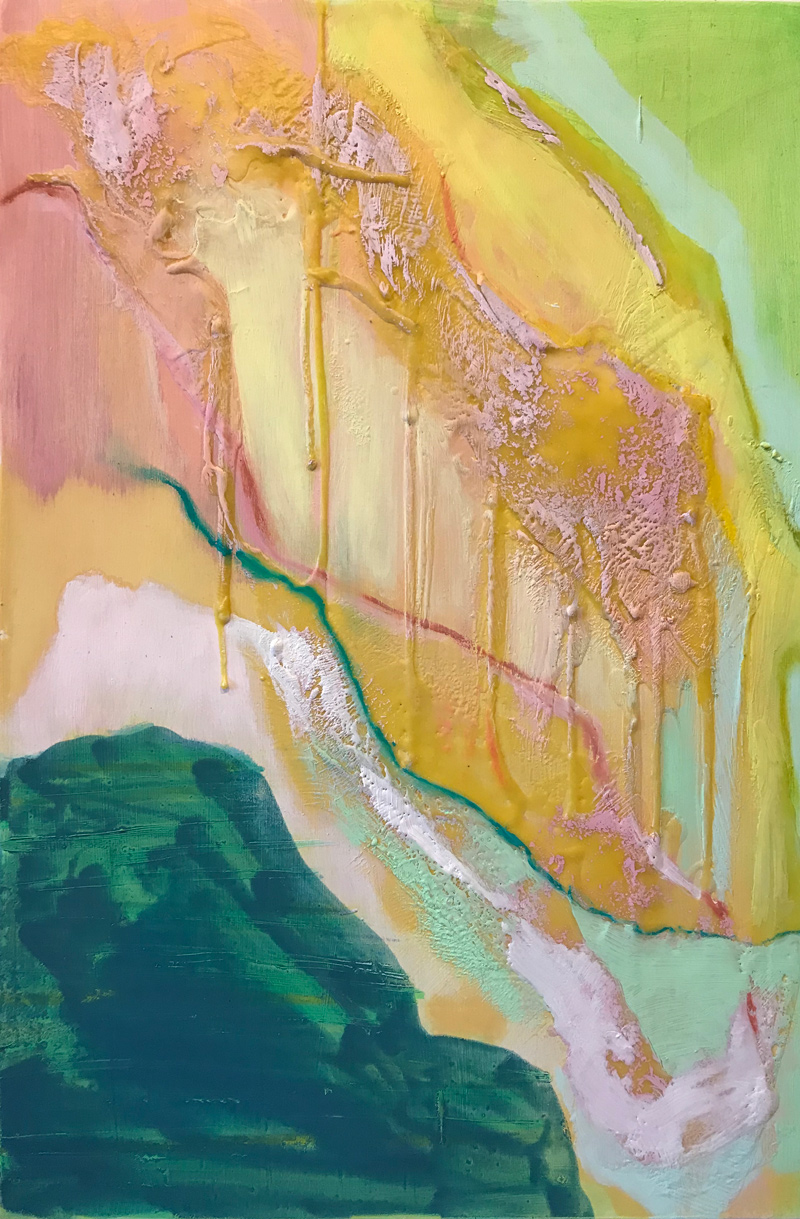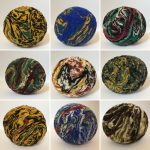By Andrea Tomkins –
The eagerly anticipated Enriched Bread Artists’ (EBA) annual open house is taking place this month.
The EBA is Ottawa’s largest non-profit artist-run cooperative. Housed in a historic Gladstone Avenue location, the former Standard Bread Company building, EBA has brought contemporary art activity to a local, national, and international audience throughout its 26 years.
Opening night is October 18 from 6 p.m. to 9 p.m., but visitors are also welcome to drop by Friday, October 19, the weekend of October 20-21 and October 27-28. Check the website at enrichedbreadartists.com for details and specific hours.
This annual event is a unique opportunity to engage directly with artists, take part in presentations, and to simply enjoy the creative environment of the EBA and its 1920s-era building. Many of the artists’ works are found in the City of Ottawa collection, Carleton University art collection, Ottawa Art Gallery collection, and in other important art collections.
Participating artists in this year’s event include Sarah Anderson, Marianne Burlew, Tami Galili, Colette Gréco-Riddle, Sayward Johnson, Gayle Kells, Gillian King, Natasha Mazurka, Juliana McDonald, Jenny McMaster, Christos Pantieras, Bozica Radjenovic, Mana Rouholamini, Dan Sharp, Carl Stewart, Svetlana Swinimer, Sharon VanStarkenburg, Tavi Weisz, Joyce Westrop, and Yvonne Wiegers.
KT asked participating artists to share one of their works and describe the meaning behind it. Read on! And make sure you click the images to enlarge.
Makosh is a forgotten goddess, a goddess of nature, of futility, weaving, and destiny. She is responsible for the creation of the human race. Her image and her symbols survived only in weaving and embroidery. Many customs in Europe celebrate Makosh. Sitting by a loom decorated with solar symbols, women felt Makosh could help to bring good luck.
People believed that Makosh spins the thread of people’s destiny and makes decisions about life and death. In Christianity, she became St. Paraskeva Pyatnitsa, who is worshiped on Friday, like Makosh was.
“Wavering” is a juxtaposition of relationship entanglement and splintering. Relationships often carry stark contrasts of closeness and togetherness for periods of time, as well as periods of fragmentation and solitude. The work represents this precarious state and the balance or effort required to maintain and nurture relationships.
Colours, layers and texture are used to evoke isolation and loneliness in this piece. Other areas focus on intertwined shapes and lines to convey a softer, lighter side. These visual aspects of the painting draw you in and make its essence relatable to almost all relationships at one phase or another.
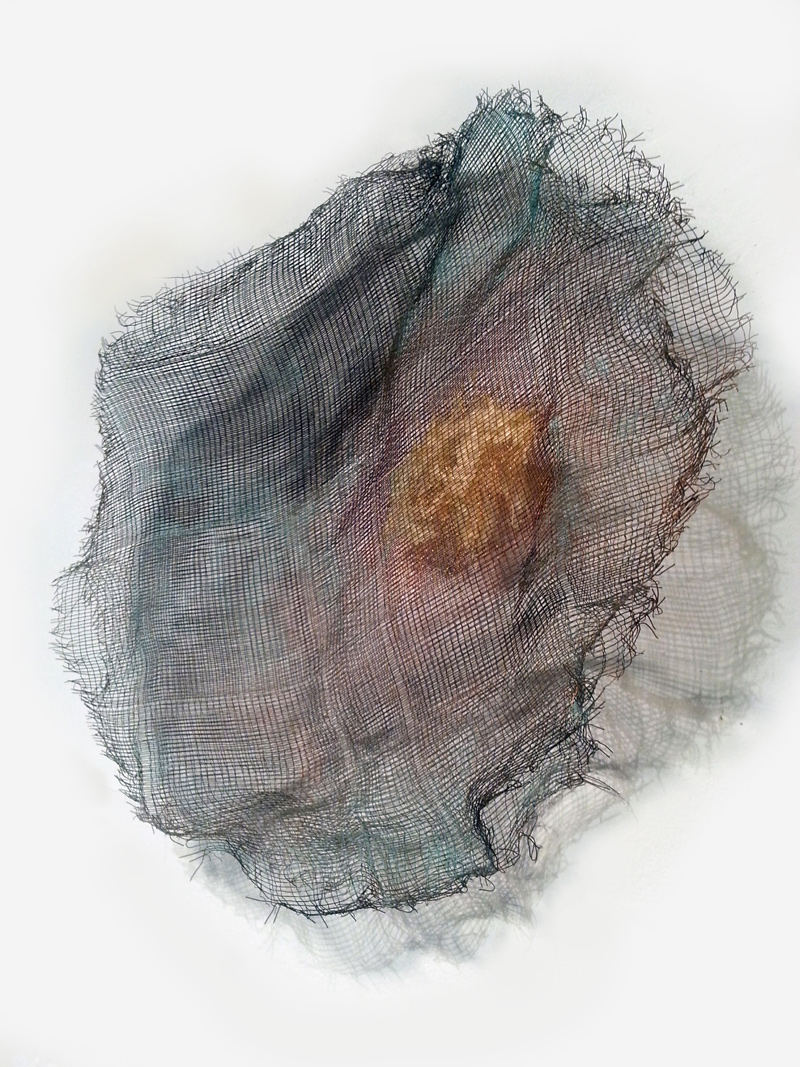 Womb Study, by Sayward Johnson
Womb Study, by Sayward Johnson
I am a textile artist who works with copper. I am interested in copper’s metaphoric qualities; it rusts blue, green and white, it tarnishes like burnished bronze, it heats to a red-pink before burning, it becomes stronger when worked, and brittle when overworked. It can take on any shape or form beneath hands or a hammer, but the impressions can never be erased. I am interested in the ability of a single wire to transform into a larger, stronger entity. “Womb Study”, woven of copper wire in multiple layers on a floor loom, is a reflection on a topic which is fragile and often invisible, although here it is transparent and pulled apart for all to see.
Wetlands 4, by Juliana McDonald
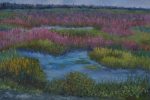 In this painting I celebrate the never-ending fascination of the creek and wetlands close to my home in Ottawa. I am intrigued by the habitats of grasses, wild flowers, and trees, and by the diversity of creatures they support. Without a healthy habitat, these wild things could not survive. In this painting, the colours are at their peak in mid-summer when the loosestrife, Joe-Pye weed, Queen Anne’s lace, and milkweed are in bloom. The soft bands of colour stretch back into the distance, layer upon layer, to the treeline. The creek meanders through the flat landscape, perhaps soon to overflow the path if there is a heavy rain. To capture the ongoing changes in what I see on my daily walks, I apply the oil paint with a palette knife. This technique suggests shifting light and enhances the complex textures as I build up the layers of paint. This work is part of the Wetland Series I began earlier this year.
In this painting I celebrate the never-ending fascination of the creek and wetlands close to my home in Ottawa. I am intrigued by the habitats of grasses, wild flowers, and trees, and by the diversity of creatures they support. Without a healthy habitat, these wild things could not survive. In this painting, the colours are at their peak in mid-summer when the loosestrife, Joe-Pye weed, Queen Anne’s lace, and milkweed are in bloom. The soft bands of colour stretch back into the distance, layer upon layer, to the treeline. The creek meanders through the flat landscape, perhaps soon to overflow the path if there is a heavy rain. To capture the ongoing changes in what I see on my daily walks, I apply the oil paint with a palette knife. This technique suggests shifting light and enhances the complex textures as I build up the layers of paint. This work is part of the Wetland Series I began earlier this year.
Working in a series on a theme allows me to explore a subject in more depth, with each painting leading to an idea for the next piece.
Through my work I intend to awaken an awareness of the importance of natural habitats, not only for the wildlife they support, but for our own well-being. It is in our hands to protect and nurture these spaces.
In Bits and Pieces, by Christos Pantieras
 This piece is part of a series of sculptures that explore the semiotics of e-communication, intimacy, and identity. With this new body of work, I have shifted from online conversations to focusing on the information embedded within online dating profiles. This sculpture moves to the call, not the response.
This piece is part of a series of sculptures that explore the semiotics of e-communication, intimacy, and identity. With this new body of work, I have shifted from online conversations to focusing on the information embedded within online dating profiles. This sculpture moves to the call, not the response.
In Bits and Pieces is an investigation of the narratives and the circumstances surrounding men who are discreetly seeking intimacy with other men. For example: “My wife doesn’t know I’m doing this” tells of a closeted adulterer; “I’m told I’m really good” reaches to overconfidence; “I’m new to this” marks a rite of passage. Nestled in the profile descriptions of online dating and hookup platforms, these revealing statements are the parameters of one’s situation and presented in this exhibition as a conversation of confessionals.
Letter board and pedestal board signs are the chosen format for this body of work, their end function being to communicate, inform, announce, or provide directives. I adapt these signs to reference human situations while revealing the melancholic or emotionally charged statements offered by the profile owner. These anthropomorphic sculptures act as both windows and players of an online world. We witness the gains, losses, anticipations, and the apprehensions of these individuals who are embarking on, or contemplating, new experiences. As onlookers, we consider whether we’re seeing their stories unraveling little by little, or are new narratives emerging in bits in pieces?
In early 2015 images began circulating around the world showing Islamic State militants in the Iraqi city of Mosul executing men accused of committing homosexual acts. The blindfolded men were taunted and beaten then taken to the top of a 100-foot building and then pushed to their deaths.
The executions attract large crowds including children. And if the men did not die upon impact with the ground, the crowd is encouraged to come forward and stone them to death with rocks provided by the militants.
As horrendous as these killings by Islamic State are, we would do well to remember that there are as many as 75 countries around the world, many with legitimate, democratically elected governments, where homosexuality is against the law and punishable by incarceration or execution.
clò mòr is Scottish Gaelic for the great cloth. Symbolically clò mòr speaks to the responsibility we have to respect, defend and care for one another.
The gift of a piece of fabric is a gift imbued with possibility. The gift of a piece of handwoven fabric is an extension of the hand, a hand extended in support, hope, and love. To weave is to unite. So I have designed a clò mòr for my community, 75 unique pieces of hand-woven fabric, one for each country, based on its national flag, where homosexuality is criminalized.
When you finish a piece of weaving there are always bits of yarn left over, from the bits left over from clò mòr I have created càrn, a pile of needle-felted stones, companion pieces to each one of the 75 fabrics in clò mòr.
Epigenetic Process, by Yvonne Wiegers
 Proliferations obsess me. The number of stars in the sky, the number of carbon dioxide molecules in the atmosphere and the number of people on the planet are the impetus for my work. The process oscillates between meditation and endurance. There is the idea of being present with the work. The work provides an avenue to contemplate the complexity of an organism cell by cell or the universe atom by atom.
Proliferations obsess me. The number of stars in the sky, the number of carbon dioxide molecules in the atmosphere and the number of people on the planet are the impetus for my work. The process oscillates between meditation and endurance. There is the idea of being present with the work. The work provides an avenue to contemplate the complexity of an organism cell by cell or the universe atom by atom.
I have been engaged in this particular body of work since 2008. The artwork involves thousands of small shapes that assert their presence by their sheer quantity or energetic lines compressed into large tangled masses. These accumulations, manifesting themselves in various media, are a process of slow accretion. Accumulations and proliferations have a duel nature in that they can be a celebration of abundance or an overwhelming deluge.
Positively this type of work is slow drawing-like meditation (like other aspects of culture that celebrate deliberate deceleration such as the Slow Food Movement).
Negatively, the work evokes anxiety about dealing with the onslaught of tasks, information overload, and technological interfacing. As the artist, I attempt to put order into the chaotic overflow of bits.
I am continuing to develop this visual form language to investigate my ideas of accumulation, proliferation and what it may mean to be an individual within the many. My work most recently has become focused on epigenetics-based on my understanding of the effects of family histories. Scientists are beginning to understand that the experiences of a lifetime can affect us at a genetic level. The paintings invoke the emotional resonances that such accumulations of histories and time can have on the individual.
These themes are distilled into intricate drawings and paintings. Primarily working in ink on paper or oil on panel, I move over the surface repeating lines or forms until the tiny individual units reach a critical mass and assert their presence. In the end, the marks delineate a type of timeline moving from beginning to end counting out an accumulation of gestures and a meditative commitment.
For more information about the Enriched Bread Artists and their 2018 open house event, go to enrichedbreadartists.com.
